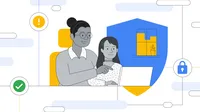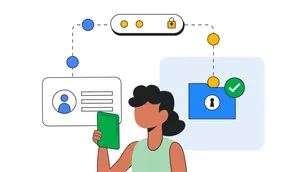5 tips to keep students safer online

Today is Safer Internet Day, a day that aims to raise awareness of emerging online issues and current concerns. The global theme is “Together for a Better Internet,” which means we must all work together, from young people and their parents to government and academia. Safer also means better: It’s not just about staying safe, it’s about using connected technologies to thrive.
As cofounder and CEO of ConnectSafely.org, a nonprofit dedicated to helping people protect their online safety, privacy and security, here's what I think everyone can do to keep kids safer online.
1. Talk to kids about the apps they use.
Get to know the apps and services children are using. Ask them what apps they use, what they like about them and how they protect themselves when using those apps. You might be surprised to find out that they are knowledgeable and responsible about their use of the apps. Whatever you do, I think it is best to make it a conversation, not a lecture or an inquisition. It doesn’t have to be long or deep but you should revisit the conversation from time to time.
2. Keep privacy in mind.
Privacy and security are interconnected — you can’t have privacy without security. Schools need to focus on two aspects of privacy: personal privacy (what you post online) and data privacy (what happens to our information). Schools need to think about their own data privacy and security policies and teach young people how to protect themselves against all privacy and security threats.
There is a common misconception that young people don’t care about privacy, but that’s not true. They just think about it differently. Where adults are concerned about businesses and government access to their data, kids are more concerned about parents and educators – the authority figures in their lives. Based on my interactions with students, young people are more privacy and security aware than many adults give them credit for.
3. Don’t forget about mental health.
Wellness and mental health are critical, especially as we recover from the pandemic and its impact on youth. We all need to balance our use of technology with other things that are important in our lives. There are some interesting new technologies that have great promise but – as with all paradigm shifts – introduce potential new risks. I would include virtual and augmented reality along with great strides in AI as examples. As we focus on these emerging technologies we have the opportunity to do a better job than we did with earlier technologies when it comes to safety, privacy and security.
4. Stay (cautiously) optimistic about the future.
I envision greater use of AI in helping to identify and solve problems. I don’t think it will ever take the place of human moderators, but it can be a first line of defense. I envision more peer support, especially among young people. The online world is made up of many communities, and it's up to everyone who’s part of those communities to make them safer and better. It'll take the efforts of a variety of folks working together to help ensure that this space is equitable and is ultimately focused on improving people's lives.
5. Get involved on Safer Internet Day.
ConnectSafely and National PTA are hosting a free virtual event for parents at 7:30 p.m. Eastern on Safer Internet Day, February 7. We’ll discuss screen time, bullying, the impact of influencers, and talking to kids and teens about tough topics. Check out our website for more information and to register. Families who wish to have conversations at home on Safer Internet Day will find suggestions and resources on ConnectSafely’s home activities page.






